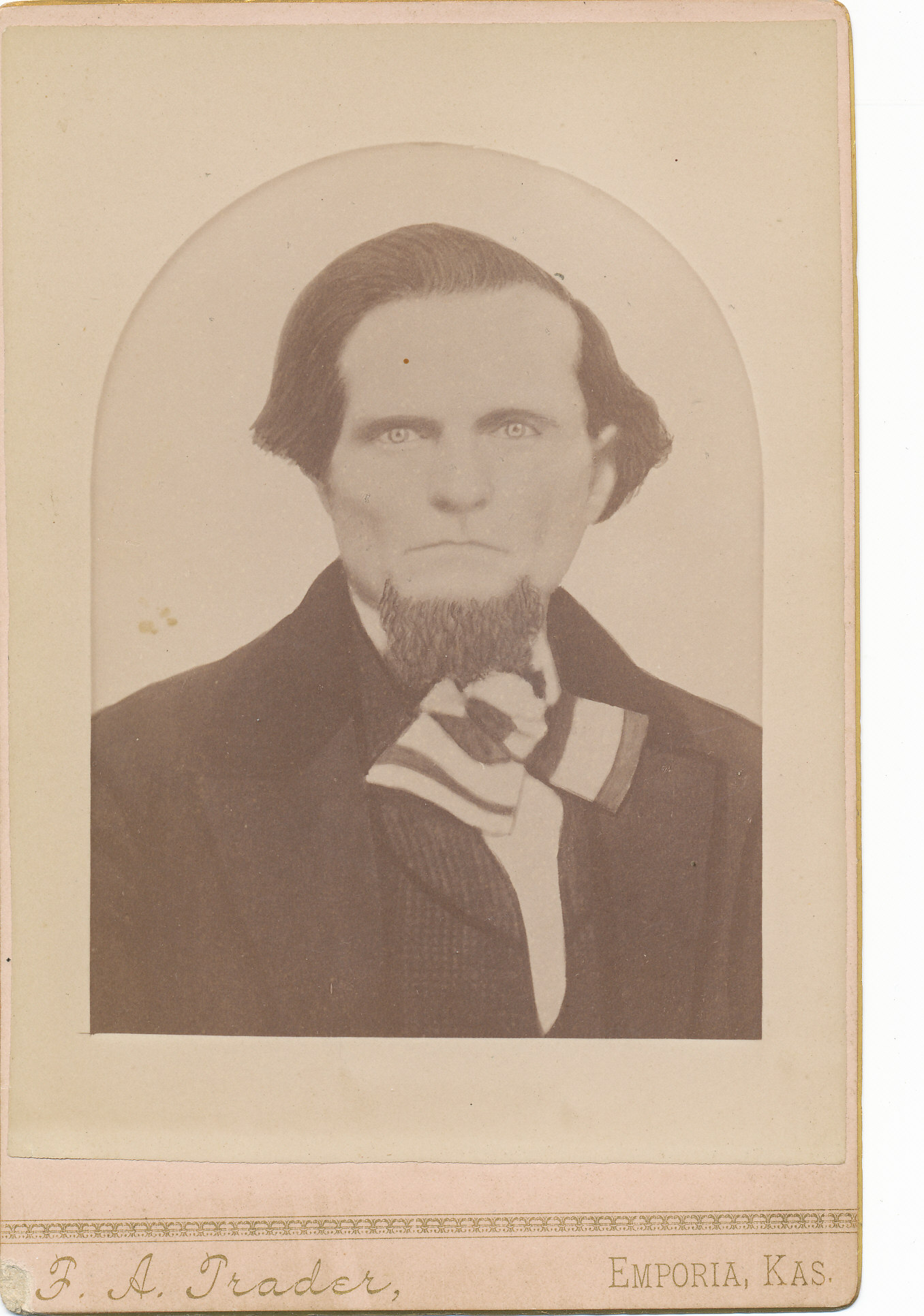Pvt., 156th Ohio Infantry
1828-1880
Thomas Jefferson Emrick, Sr was born the 2nd of 7 children to George Emrick (1808-1867) and Mary Sarver Emrick (1799-1862) in Ohio in 1828. In 1860 he married Amanda Clark (1844-1906). They had 7 children together, one of whom, Thomas Jefferson Emrick, Jr (1864-1895) was born while Thomas Sr. was serving with his unit in the Civil War. In the spring of 1866, along with several neighbors, the family moved to Kansas. He died from typhoid fever in 1880.
On May 2, 1864, Thomas enlisted in the 156th Ohio Volunteer Infantry unit Company I at Camp Denison. They traveled from Camp Denison, OH to Falmouth, KY and finally all the way to Cumberland, MD where they saw their only battle. Battle of Folk’s Mill was part of the Valley Campaigns of 1884. The Confederates wanted to extract ransom from the towns and disrupt the railroads. On August 1, 1864, 3 regiments of largely untested volunteers of Ohio Volunteer Infantry, a partial regiment from West Virginia, the 1st IL Light Artillery Battery and the 2nd Maryland Infantry led by Benjamin Kelly went up against 2 brigades of seasoned soldiers commanded by John McCausland. While the battle was largely a draw, Kelly’s forces succeeded in protecting the town from ransom demands and denied the Confederates their goal of the major disruption of the railroad.
Thomas’ widow Amanda, married 3 times after his death. She married John Elting in November of 1882 and was awarded a divorce from him in 1886. In 1890 she married her sister’s widower Henry Oakley. She remained married to him until his death in 1902. Her third husband was John Neeley whom she was married to from 1903 until her death in 1906.
In late 1891 Amanda filed for widow’s benefits under the recently passed Dependent Pension Act and the 1889 Arrears of Pension Act. For 8 years Amanda battled with the government bureaucracy for widow’s benefits. For much of this time she had the representation of a lawyer. The government was painfully slow in reviewing the file and asking for redundant information/documentation, the first request not coming until November of 1896. In August of 1899, after she was no longer being represented by lawyers, the government erroneously denied her claim based on the pre 1890 pension laws. By 1899 Amanda had lost 3 children, one, her eldest daughter, just that year. She never appealed the denial.
Lessons learned/reinforced:
*There is a reason that family legend isn’t “admissible” as evidence to lineage societies. Family legend said that Amanda was denied pension because the government couldn’t find proof of Thomas’ service. His service was never in doubt for the pension case.
*Dealing with the Government has always been a nightmare. This reality is nothing new.
*Be persistent when dealing with NARA. In addition to my 2 separate requests, my cousin had personally gone to NARA to find the pension file. Finally, I was able to get all 72 pages of the file.
*GAR was instrumental in getting the Pension Laws changed fighting hard for widows and dependents. Their support of Harrison after Cleveland refused to sign into law the Dependent’s Pension Act, was instrumental in Harrison’s election.
*Our ancestors were very tough! They may not know how to modern technology, but would certainly run circles around us in the field. Thomas marched over 740 miles in 90 days in 1864. (Most days, I do good to waddle from my couch to the fridge.) According to Amanda’s letters in the pension file, this left Thomas partially disabled by chronic digestive issues. So, even before his untimely death in 1880, Amanda ran the farm and raised 7 children mostly by herself. When he passed in 1880, 5 of the 7 children were still minors including two girls under 10. Gibbs would say, “She would’ve made a hell of a Marine!”
*There is a reason forms and documents submitted to the government and courts require you to print or type and not use cursive!

